In the heart of Philadelphia, you’ll find a museum like no other. The Mutter Museum is the city’s weirdest institution.
It’s definitely not for everyone. The Mutter houses a bizarre and rather macabre collection of medical oddities, scientific relics, and human remains.
Thomas Dent Mutter assembled the collection and donated it to the College of Physicians of Philadelphia in 1859. He was one of the first physicians to use anesthesia. Mutter was a pioneering plastic surgeon who helped fix the 19th century’s so-called “monsters” and improve their lives.
Since then, the museum’s collection has grown to some 20,000 objects, though only about a tenth of them are on public display. It’s a solemn place, where the human condition is laid bare.
The “disturbingly informative” museum is a trip back in time, with a Victorian vibe. The museum normalizes death, illness, and disfiguring pathologies with objects of tremendous power.
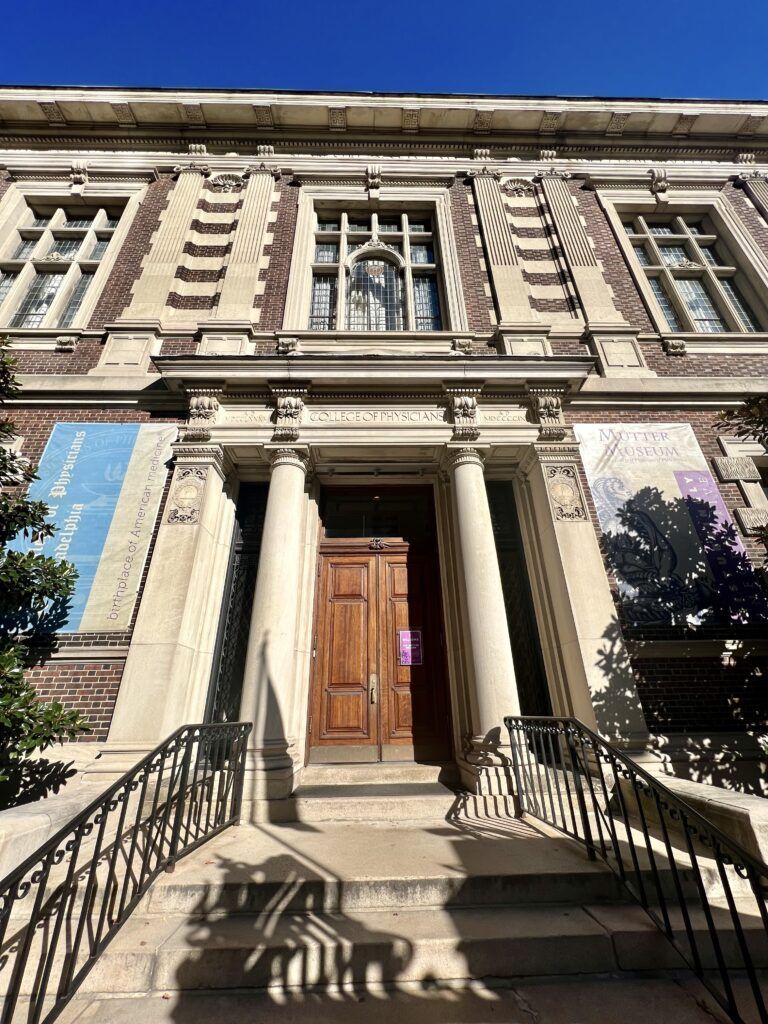
It specializes in artifacts of human suffering — skulls, skeletons, anatomical specimens, wax models, body parts, genital warts, tumors, fetuses, slices of brain, and pickled things in jars. Many of them are from a time when science had no answers to something that went dreadfully wrong with a person.
I had just been to the city’s spooky Eastern State Penitentiary, but to my mind this place was more eerie (and interesting) than a ruined prison.
You enter on the second floor, with a clear view of a wide staircase leading down to the lower level. The walls are adorned with gleaming wooden curiosity cabinets. Each contains an array of human remains, specimens, and tools.
Photography isn’t permitted within its halls. It’s a rule that’s entirely justified, given the actual human remains on display.
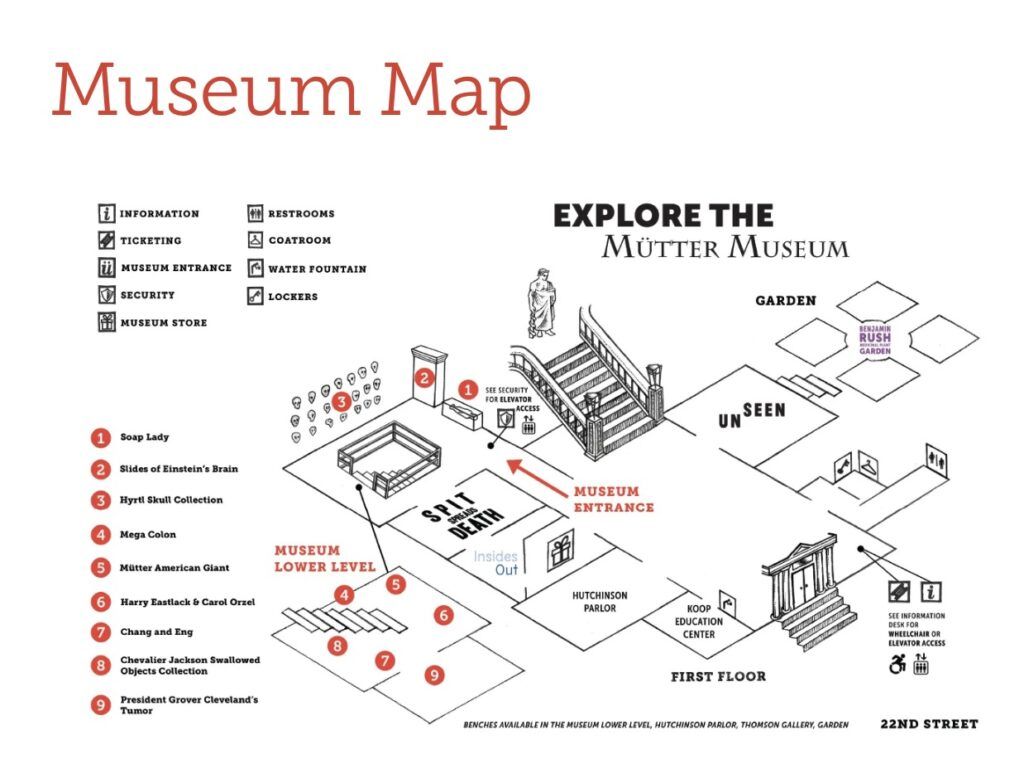
I must confess a slight breach of this rule. In my eagerness to provide you with a glimpse of the museum’s collection, I discreetly snapped just a few photos.
Rest assured, I made every effort to avoid capturing anything overly graphic. Thus, I have very little to show you really.
The exhibits themselves are, by definition, graphic. The gruesomeness is leavened somewhat by the fact that the artifacts originally served as essential teaching tools for medical professionals and students.
Viewing remains was how doctors learned their trade. It’s a case of the dead serving the living.
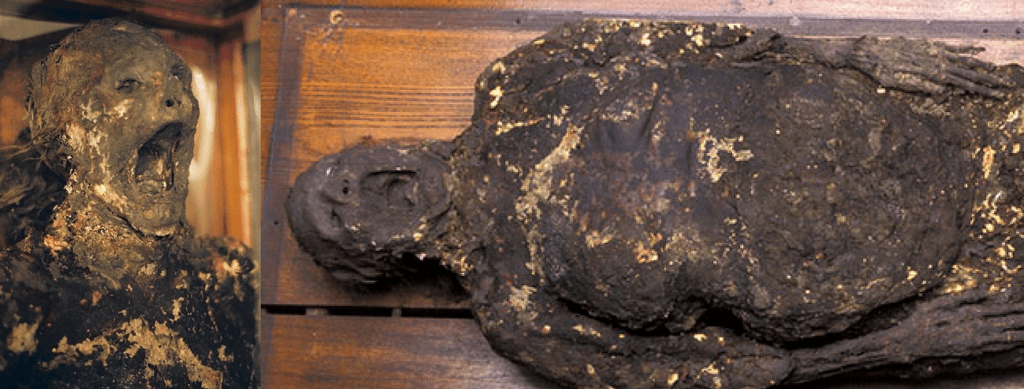
Guide To The Mutter Museum: What To See
Here are some of the highlights and things you can see on a visit to the Mutter Museum.
Soap Lady
The first of the museum’s bizarre exhibits you’ll come across is the Soap Lady. She’s a well-preserved mummy who lived in the 19th century. Her identity is unknown and her body may have been stolen from its grave, a not uncommon occurrence back then.
Her body morphed into a wax-like corpse due to a chemical reaction to a damp environment. In the Soap Lady’s case, the combination of a sealed coffin and the unique conditions of her burial led to this rare phenomenon.
As a result, her body did not decompose in the typical manner. Instead, it underwent “saponification,” effectively turning her remains into a hard, waxy substance. Her mouth is open in a permanent scream.
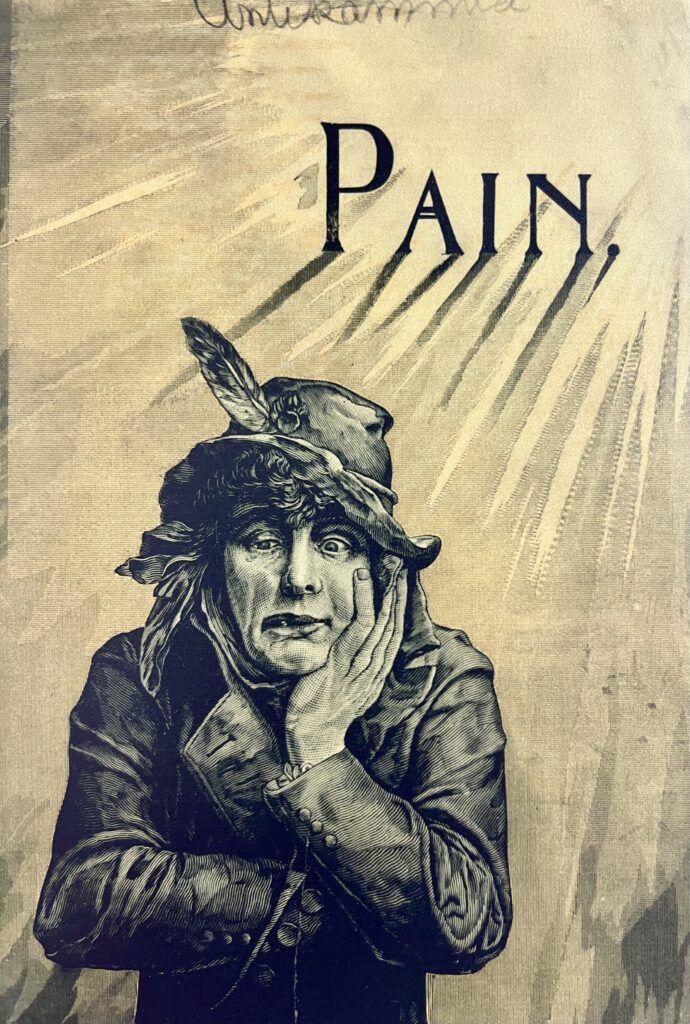
Einstein’s Brain
Next, you can ogle Einstein’s brain. After Einstein’s death in 1955, pathologist Dr. Thomas Stoltz Harvey performed an autopsy on Einstein’s body.
During the autopsy, Harvey removed Einstein’s brain for examination. He preserved the brain for future research, believing that it might hold clues to Einstein’s extraordinary intellectual abilities.
Over the years, Dr. Harvey sectioned Einstein’s brain into numerous pieces for study. Some sections were preserved in formaldehyde. Others were thinly sliced for microscopic analysis.
The Einstein’s Brain exhibit shows several of the museum’s 46 brain slides, allowing visitors to see and study them up close.
The exhibit doesn’t provide any definitive answers about what made Einstein a genius. Turns out, you can’t learn much from a dead brain, as opposed to a living one.
Hyrtle Skull Collection
The Hyrtl Skull Collection is one of the museum’s highlights. It consists of 139 skulls assembled by Josef Hyrtl, an anatomy professor and renowned phrenologist.
Hyrtl gathered these skulls from various locations across Europe. His primary objective was to identify structural similarities among skulls from similar ethnic backgrounds.
Interestingly, the skulls are still organized geographically, with Italian skulls here and Spanish ones there. Hyrtl even inscribed notes about the lives of these individuals, to whom the skulls once belonged, directly onto their surfaces.
Fetuses
On the lower floor there are non-viable fetuses, many with spina bifida. They’d been preserved in various states. Some were dried and splayed out like a horrific reenactment of a dissection.
Others float in jars, surrounded by murky liquid, as they have for more than a century. Some were missing portions of their skulls and had malformations to their brains and other vital organs.
Several were conjoined, sharing so many organs and systems it was impossible to tell where one stopped and a sibling began.
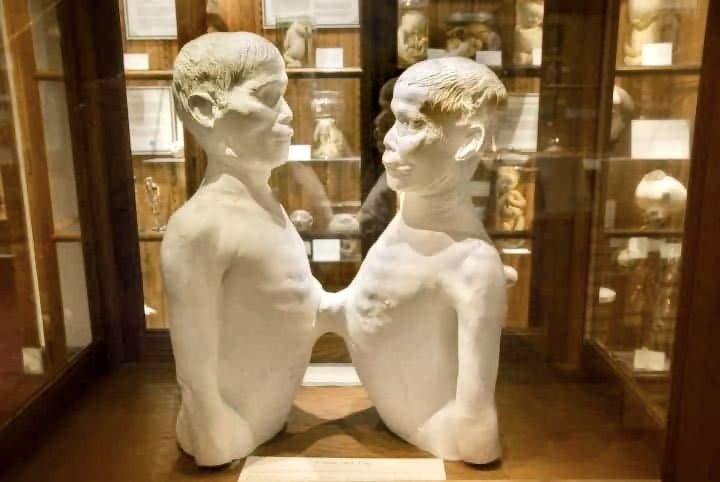
Conjoined Twins
This exhibit features a plaster cast of the torsos of Chang and Eng Bunker. They were perhaps the most famous conjoined twins in history.
Chang and Eng Bunker were born in Siam (now Thailand) in 1811. They were connected at the sternum by a band of flesh and cartilage.
They were known as the “Siamese Twins.” They became internationally famous during the 19th century for their unique condition, performing in circuses and sideshows.
They were only joined through one organ, their livers. Today, they could probably be separated without issue.
Amputations
Elsewhere, there were amputations. A jar of toes on one shelf, a dried-out foot on another.
A thumb here, a face (good grief, an actual face) there. If you gathered all the pieces together you’d be able to compose several patchwork people.
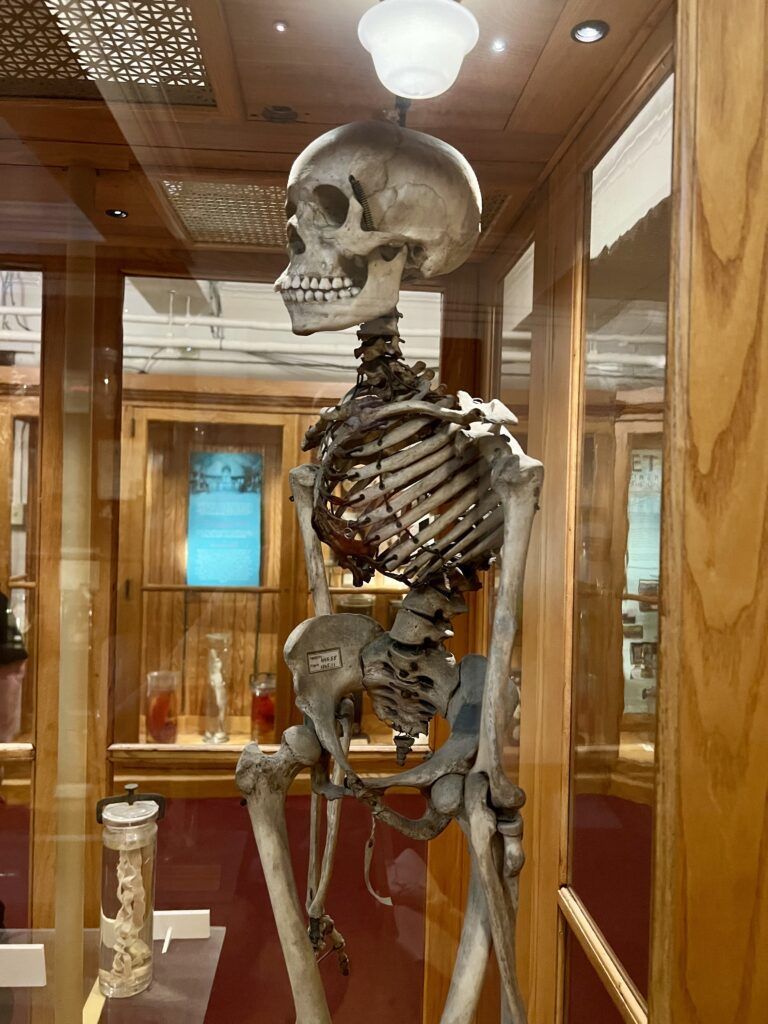
Skeletons
There were plenty of skeletons. On the whole, they seemed less personal, and easier to look at.
One of these skeletons is the Mutter American Giant also called the “Kentucky Giant.” In life, he was 7’6″ and suffered from pituitary gigantism. He’s the second tallest skeleton on display in the world. The label mentions that his grave was robbed.
The giant stands next to a 3’6″ woman with dwarfism, Mary Ashbury. It’s a condition that occurs in one out of 40,000 children. She died trying to give birth.
Harry Eastlack & Carol Orzel
This exhibit is indeed a sad tale. Harry Eastlack and Carol Orzel both had one of the rarest diseases on the planet — a life-limiting rare genetic disorder called fibrodysplasia ossificans progressiva (FOP). It’s a condition that causes soft tissues to turn into bone, imprisoning its victim and freezing them in place.
Harry’s condition manifested in his childhood. It progressively immobilized him. After his passing in 1973 at age 39, his skeleton became an exhibit at the museum.
Carol Orzel also battled FOP, dying at age 58. She became an advocate for FOP research and support, contributing to efforts aimed at understanding and finding a cure for the disease. She had a large collection of jewelry and some of her bling is displayed with her skeleton, as she requested.
There skeletons are not for the faint of heart, as it’s heartbreaking to think how they suffered. There’s still no cure, but scientists are close to a treatment.
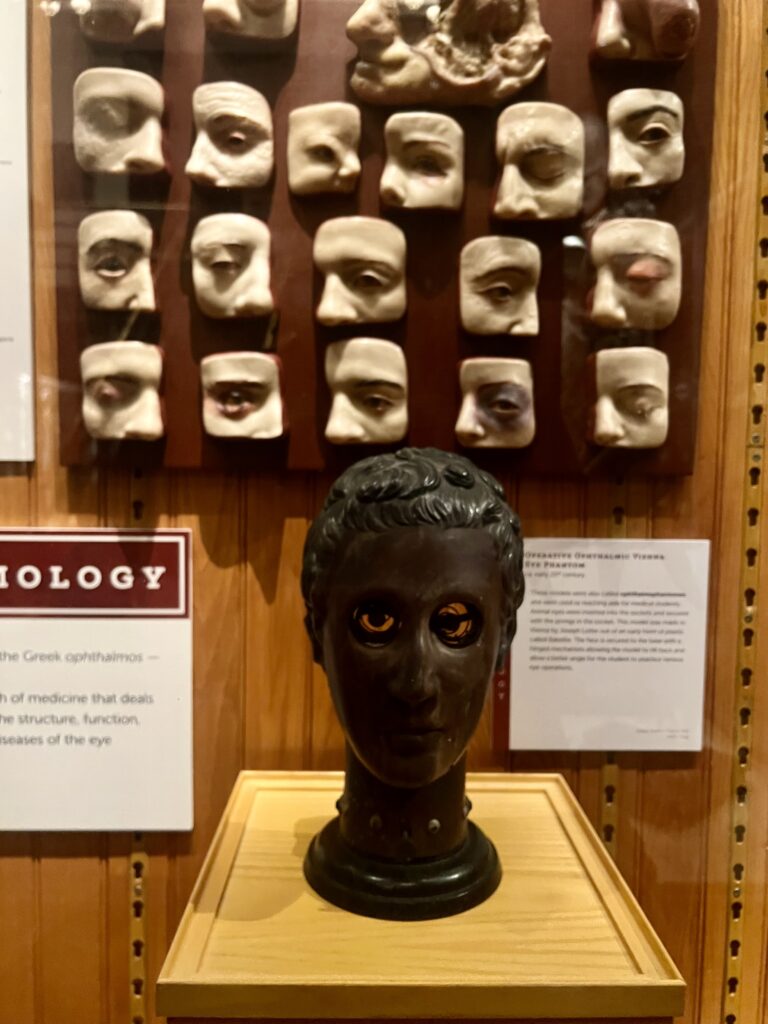
Eye Wall
The Eye Wall is a display with a collection of preserved human eyes and a variety of eye-related artifacts. You see the uniqueness of the human eye through a multitude of specimens, including preserved eyeballs, cross-sections, and various eye disorders.
One of the striking features of this exhibit is the array of eye masks. They were used to cover and protect the eyes during various medical procedures and conditions.
Grover Cleveland’s Tumor
President Grover Cleveland’s jaw tumor, known as “Big Ben,” is another oddball exhibit.
The cancerous tumor was discovered in 1893 when President Cleveland complained of a sore spot in his mouth. Cleveland opted for a secret surgery aboard a yacht, away from the public eye. The surgical procedure was conducted by a team of surgeons led by Dr. Joseph Bryant.
Remarkably, the surgery was successful and the tumor was removed without the public’s knowledge. To avoid suspicion, President Cleveland claimed he was on a fishing trip during his recovery. He returned to public life shortly thereafter, his health was restored.
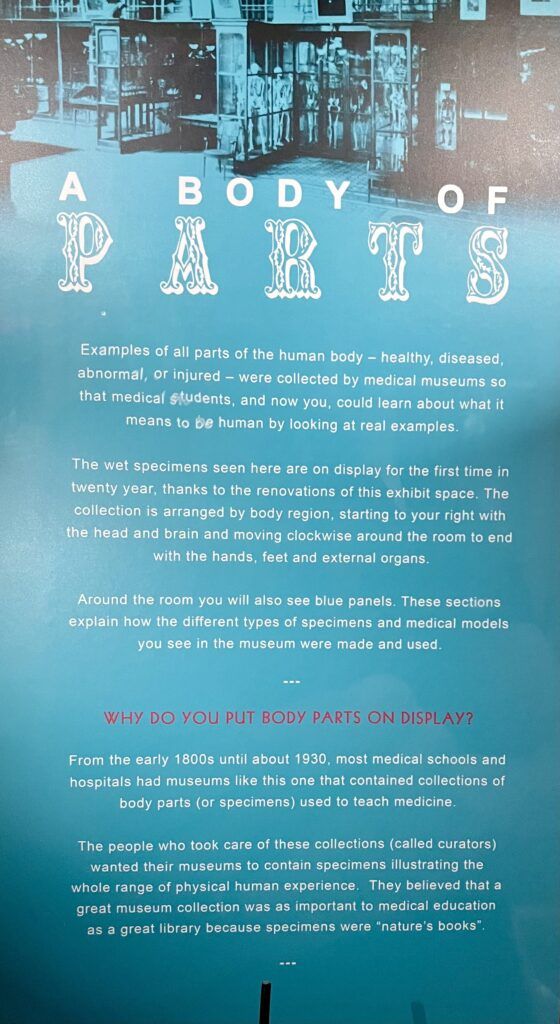
Garfield’s Assassination
There’s also a clinical analysis of Lincoln and Garfield’s assassinations, featuring intriguing drawings, diagrams, and select medical samples.
There was even a curious exhibit involving a piece of President Garfield’s skin, recovered during his autopsy.
Back in those days, medical practitioners weren’t well-versed in antiseptic methods, and the concept of rigorous handwashing was somewhat alien.
To make matters more disconcerting, when a person was shot, the standard procedure was to extract the bullet, but not before probing the wound.
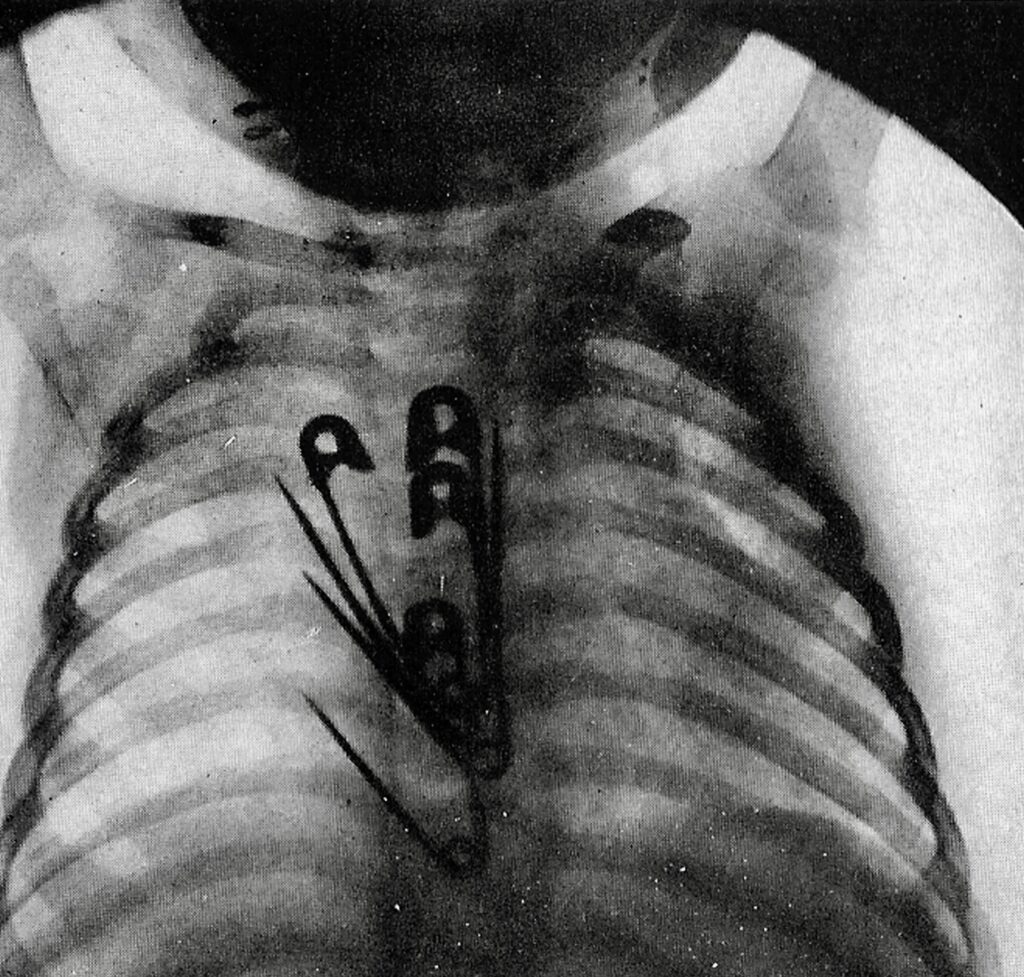
Chevalier Jackson Collection
This is a collection of 2,000 objects donated by Chevalier Jackson. He was a pioneering laryngologist from the late 19th and early 20th centuries. It’s essentially a set of trophies he saved of things his patients had swallowed and got stuck.
These objects includes coins, buttons, open safety pins, wires, needles, and other small items. Even a toy dog.
One can’t help but wonder, how could someone swallow such things?
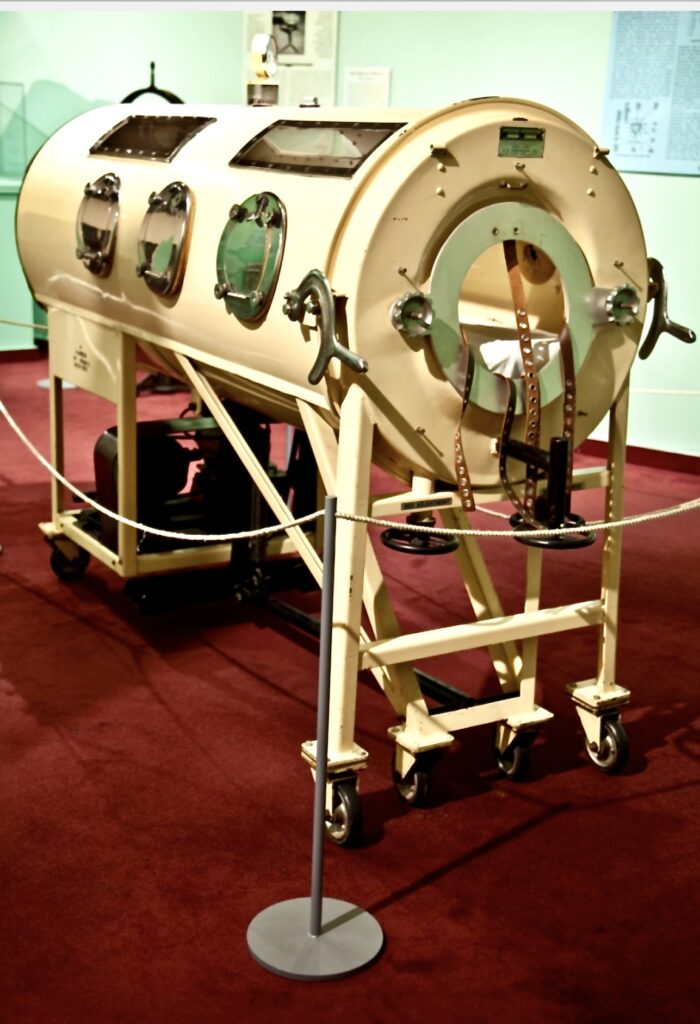
Iron Lung
The Iron Lung exhibit is a real iron lung machine that was once used in hospitals to treat patients with polio during the polio epidemic in the United States.
The iron lung functioned by changing the air pressure around the patient’s chest. It caused their lungs to expand and contract, allowing them to breathe.
Patients with severe cases of polio often relied on these machines to breathe for them when their diaphragm and chest muscles were paralyzed.
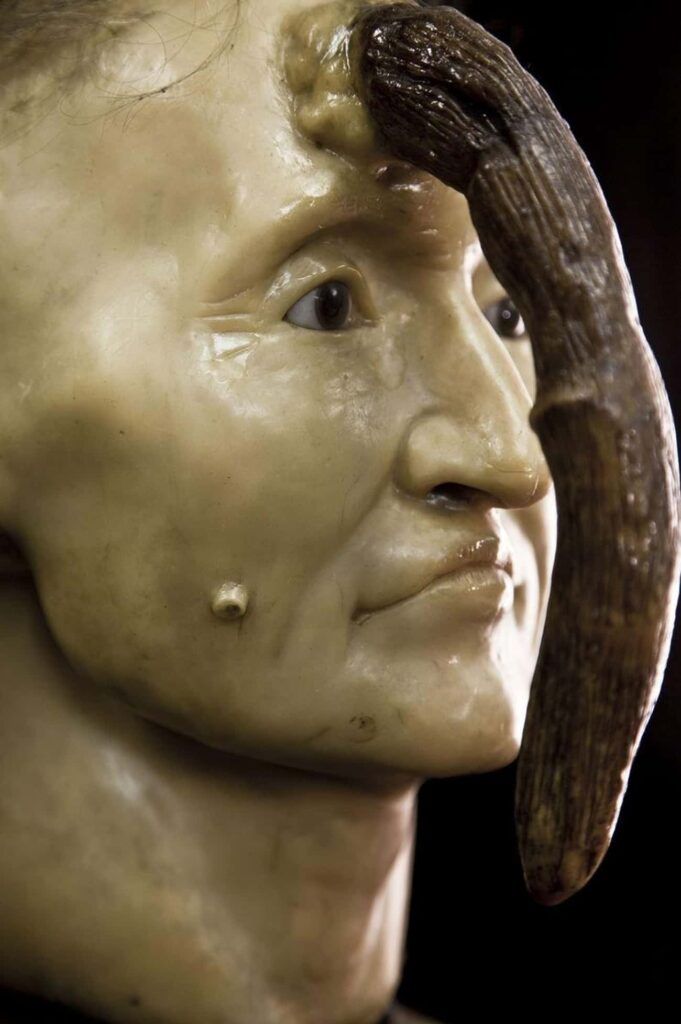
Madame Dimanche
In another exhibit, you’ll see a human horn growing out of a woman’s forehead. It’s a wax model representing a severe case of Cornu Cutaneum. It occurs when compacted keratin forms a protrusion on the skin.
Madame Dimanche was a French woman living in Paris. Her horn grew to 10 inches over 6 years, curving down to her chin, before being removed.
Megacolon
The Megacolon is an astonishingly large 8 foot long colon. The 40 pound colon is coiled and stretched out in a glass case.
It belonged to a man named John Balaban, who suffered from a rare condition known as Hirschsprung’s Disease. It’s a congenital disorder that affects the large intestine, causing it to become massively enlarged.
John died at just 29. He called himself “Balloon Man” and even performed in freak shows. Today, this disorder can be treated.
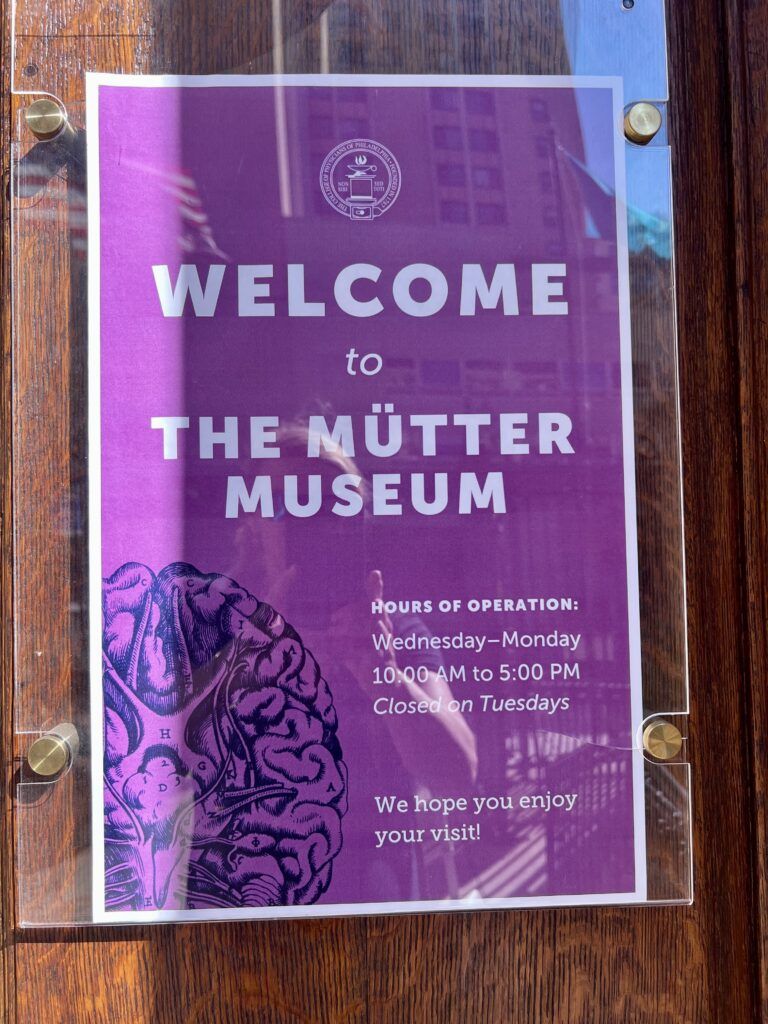
Practical Guide & Tips For Visiting The Mutter Museum
Here are some must know tips for visiting the Mutter Museum.
Address: 19 S 22nd Street Philadelphia PA 19103
Hours: Wednesdays–Mondays, 10:00 am to 5:00 pm, closed Tuesdays
Tickets: Tickets are $18. Unfortunately, the Mutter Museum is no longer included in the Philadelphia Go City Pass.
Facilities: There are rest rooms, coat rooms, a museum shop, and water fountain in the museum. There is no cafe and food and drink are not allowed in the museum.
Is The Mutter Museum Worth Visiting?
Yes, I think it’s definitely worth visiting just because it’s a frank (and admittedly) shocking collection of significant medical value. It’s a one of a kind museum that doesn’t exist elsewhere, frozen in a time capsule.
I’m not the only one who thinks so. The museum is wildly popular, with over 160,000 people visit per year.
But perhaps it’s not for the squeamish. You may have difficulty viewing certain exhibits. Or wince at the idea that human tragedy was once handled as a spectacle.
Still, the Mutter Museum is one of the only museums in the world with its original displays. It’s a serious place, and not a sideshow.
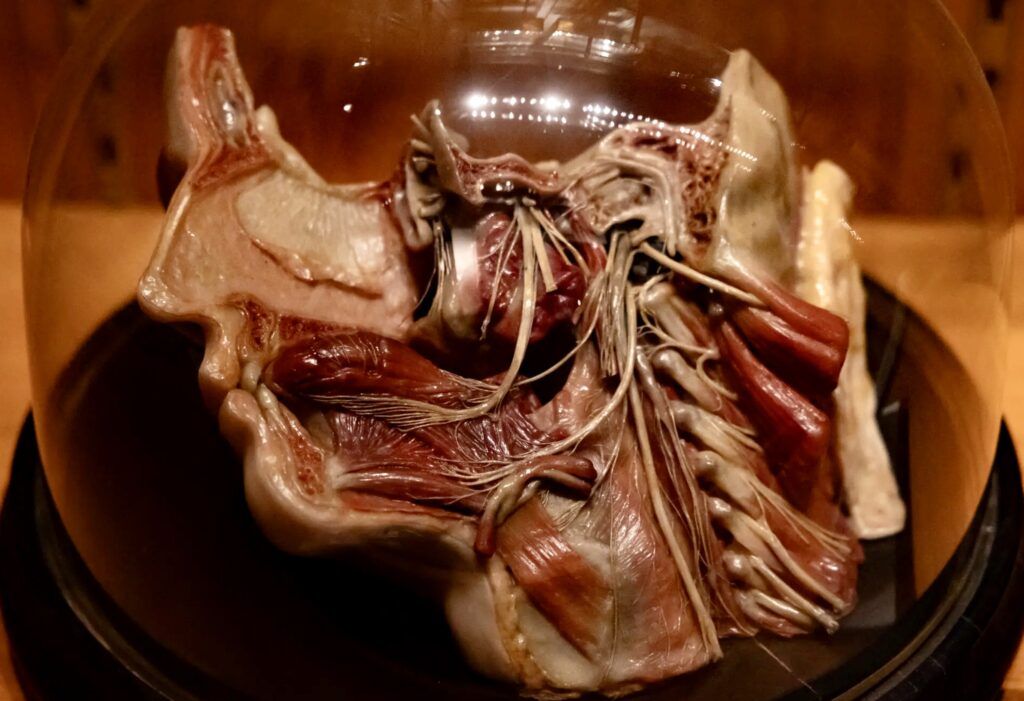
A visit may prompt you to think about the mysteries of the human body and ponder the advance of medicine and science. It’s a forceful reminder of your own mortality. It’s a lucky person who hasn’t had something go badly wrong in life.
How Long To Spend At The Mutter Museum?
It’s a small museum. You could cover everything in an hour. But if you are interested and read all the information panels, it could take much longer.
Will The Mutter Museum Be Sanitized?
Unfortunately, there is a bone of contention. The museum’s human remains, some sketchily obtained, are at the center of an ethics clash. At issue is whether the museum’s residents had agreed to be displayed “for eternity on autoplay” and whether the exhibits are sufficiently respectful.
In May 2023, under new director Kate Quinn, the museum took down the museum’s online exhibits and YouTube videos. The potentially insensitive displays are being reexamined under the modern lens for respectability and propriety. (Some videos have already been restored.)
Yet, the Mutter is a history museum from the Victorian era. Its exhibits were acquired in an era where no regulations existed. An undue focus on dignity could turn the museum on its head, making it about health rather than death and pathology.
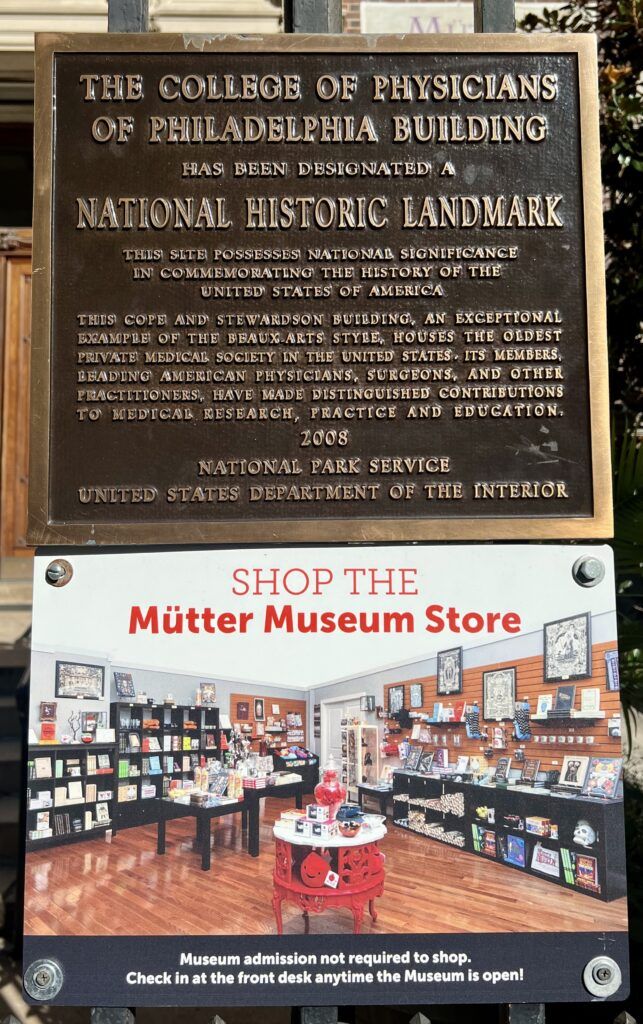
Claiming that the museum’s exhibits are a “horror show” is hyperbole. The fact is that humans are fascinated by how we work.
I hope the institution is not deconstructed. A more contextual and thoughtful description of artifacts is perfectly fine and perhaps overdue. The museum could have modern explanations alongside historical ones.
And instead of hiding or censoring facts about provenance or consent, the museum could simply be transparent about the controversial aspects of its exhibits. It’s not a children’s museum after all.
But, otherwise, the museum should remain as is, with all its theatrical Gothic-ness, titillating oddball appeal, and ability to make people uncomfortable.
It’s not supposed to be a safe space for everyone. The whole point is to bring attention to what happened to these people, many of whom had exceedingly rare diseases.
I am firmly on Team Keep The Mutter Weird. If you don’t like the idea of a medical museum, don’t go.
I hope you’ve enjoyed my guide to the Mutter Museum. You may enjoy these other Philadelphia travel guides:
- 2 Days in Philadelphia Itinerary
- Top Attractions in Philadelphia
- Guide to the Philadelphia Museum of Art
- Guide to Philadelphia’s Rodin Museum
- Guide to Eastern State Penitentiary
- Guide to Independence National Historical Park
- Guide to the Betsy Ross House
- Guide to the Barnes Foundation
If you need a guide to the Mutter Museum, pin it for later.

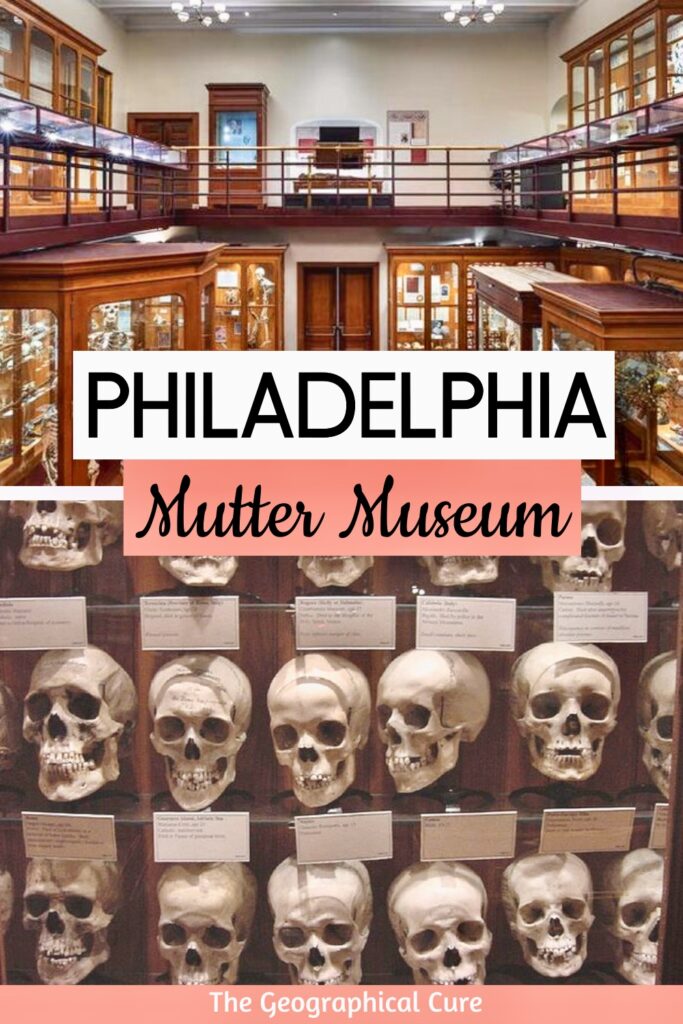
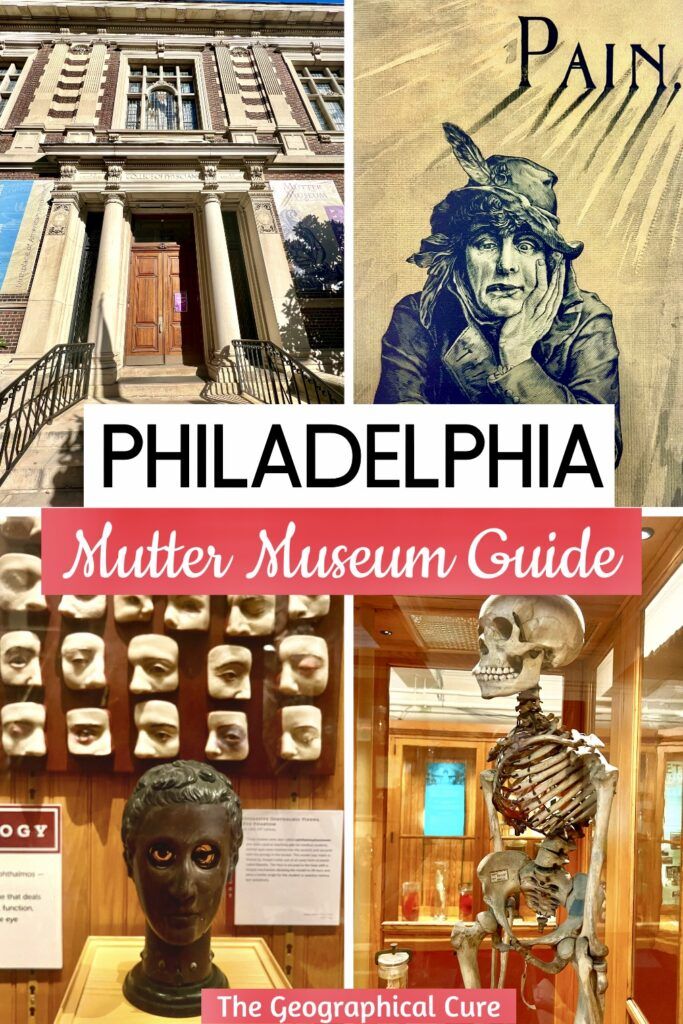
That is graphic but so interesting. Having been involved in the medical field, I’m not grossed out but amazed and the twists and turns the human body can take